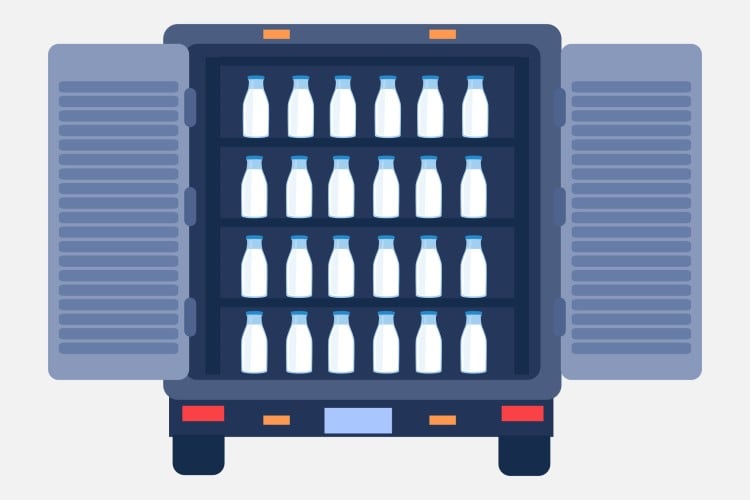The solution, which offers quarterly-updated online sales data by industry, category, company, brand and retailer across 12 countries, is ‘a first’ for Euromonitor. “We are putting something really unique out there,” said David Hedin, e-commerce project manager at Euromonitor International. “When we look at the data available for the online space, it focuses mostly on the day-to-day optimization of funnels, SEO, digital advertising and sales tracking at specific retailers like Amazon."
“It is an enormous challenge to create a sales tracker that is comparable across retailers - not to speak about countries - which is exactly what we’ve managed to do.” - David Hedin, Euromonitor International
According to Hedin, this is likely the first comprehensive attempt at sizing online FMCG sales across more than 400 retailers and over 80% of online sales. “The enabling factor is our ability to structure big data into our existing category taxonomy, instead of relying on the category tree of each retailer, which makes it impossible to accurately compare sales across retailers,” he added.
E-commerce tipped to remain a dominant force
E-commerce growth has slowed since its surge at the start of the decade, when total retail sales rose from 15% in 2019 to 21% in 2021, largely accelerated by COVID-19-induced lockdowns. Now, the segment sits at 22% of total sales, and Euromonitor estimates it will remain a dominant force, accounting for 47% of retail growth by 2027. In 2022, appliances and electronics ($652bn), fashion ($593bn) and food ($349bn) accounted for the highest online sales globally.
Within the food segment, shoppers have increased the volume of dairy products they purchase through e-commerce channels, according to Euromonitor’s data. “More dairy is sold online today than during the pandemic, and so it would seem that there has been significant stickiness [when it comes to consumer shopping habits].”
"For every person that has stopped ordering online, several others have started to do so, and many have become long term omni-channel shoppers,” Hedin added.
Grocers outperform marketplaces on dairy sales
Across distribution channels, grocery chains hold a competitive advantage over marketplaces when it comes to dairy sales thanks to grocery chains’ cold logistics infrastructure, Hedin explained. “A marketplace can outperform in shelf-stable categories like milk formula or shelf-stable milk, but chilled and frozen categories are the domain of grocery specialists,” he said. “Amazon, for example, is a leader in milk formula, but holds only 1.2% in dairy.”
In the UK, supermarkets Asda and Sainsbury’s are neck in neck for the second place in online grocery, Hedin revealed. “In Q4 2022, we saw Asda overtake Sainsbury’s in online dairy sales, while the latter remained a clear winner in plant-based dairy, outperforming even Tesco and Ocado for all of 2022.”

In today’s inflationary environment, shoppers look to online retail in search for cheaper deals, which means businesses need to be more adaptable than ever. “Inflation means that consumers look to save and retailers that appear to have higher prices online than offline - or that charge high delivery fees - are going to struggle,” he said. “We already see quick commerce suffering from this effect.”
So how could quarterly-updated sales data for more than 400 FMCG brands help retailers adapt to an ever-changing market? Hedin said that as standard, the market research firm's solution offers sales information by category, with breakdown by brands, companies and retailers for any industry or country combination, e.g. dairy or dairy alternatives in the US.
“Has a new start-up showed up in your category? We’ll be able to represent its sales already in the next quarter, so you know if the new positioning and marketing is effective,” Hedin explained. “If a competitor gets temporarily ousted from one of the grocery chains, quarterly data enables management to task sales and marketing teams with taking online market shares, and track their results both in pounds and percentages for a fair evaluation regardless of the overall online trends.” Private label sales data can also be monitored, for example, but the tool can go deeper still, depending on the specific needs of its users.
Euromonitor is also adding a new data feature to its tool to offer a more detailed picture on consumer shopping habits. “You will see the new e-commerce data feature in our upcoming content, and we will also produce some content focusing with granularity on the online space by combining the e-commerce sales measurement with insights from Digital Consumer to understand how shoppers behave, how they would like to shop, and what they expect from online stores.
"We hope with this to be able to give a better answer than ever before to the question ‘is the investment in project X worthwhile?’ that all companies face on a daily basis.”



